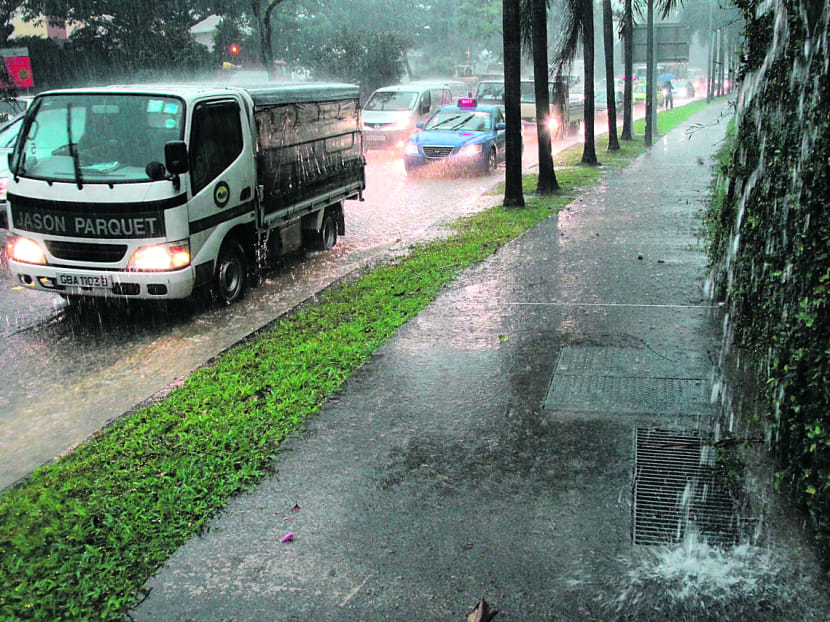A flood prevention idea ... using porous road surfaces
SINGAPORE — The National University of Singapore is studying the idea of using permeable surfaces for minor roads and pavements, which could help prevent floods by slowing down the flow of water into drains after heavy rainfall.

Permeable surfaces could slow down the flow of rainwater into drains, helping to reduce floods. TODAY file photo
SINGAPORE — The National University of Singapore is studying the idea of using permeable surfaces for minor roads and pavements, which could help prevent floods by slowing down the flow of water into drains after heavy rainfall.
These surfaces would allow water to be absorbed into a layer of porous concrete and flow through a layer of gravel, to be stored temporarily.
About 30 to 40 per cent of the space in between the gravel is used to store the water, which will then flow through a layer of geotextiles, or permeable fabrics, before it exits through small openings into the drain.
The whole process could hold up to a few hours of rainfall.
However, an engineering expert said challenges still exist.
Associate Professor Tan Soon Keat, Deputy Executive Director at Nanyang Environment and Water Research Institute, said: “Maintenance will be an issue. If water can go through, it also means debris will be trapped between the pebbles.
“This ... practice, coupled with proper design of the base layer, can be used in pedestrian walkways or perhaps pathways in parks, or pedestrian malls.”
Assoc Prof Tan added that such porous surfaces would be most feasible in areas that do not carry heavy loads such as trucks and cars.
National water agency PUB recently imposed stricter flood prevention requirements on new developments.
From last month, developers are required to implement on-site measures to slow down the flow of stormwater into public drains. This rule will apply to new projects with land sizes of 0.2 hectares and above.
A green roof is one such on-site measure. Made up of plants and green spaces, these popular features on top of commercial and residential developments serve two functions — treating water for it to be reused and slowing the release of water into drains after a heavy downpour.
Experts said it makes sense for developers to play their part.
Mr Chong Kee Sen, Vice-President of the Institution of Engineers Singapore, said: “What we experience is short-duration, high-intensity rainfall. It would be relatively costly for us to have public drains to be sized to cater to such situations. In land-scarce Singapore, this may not be a viable solution.
“What could be a good solution will be for each developer to play its part (in slowing the release of water into drains), thereby preventing a flood and, at the same time, reducing the cost of the construction of public drains.”






